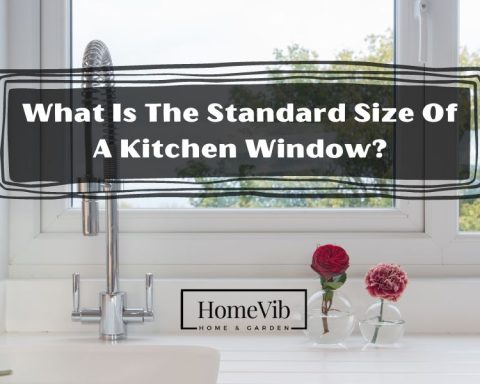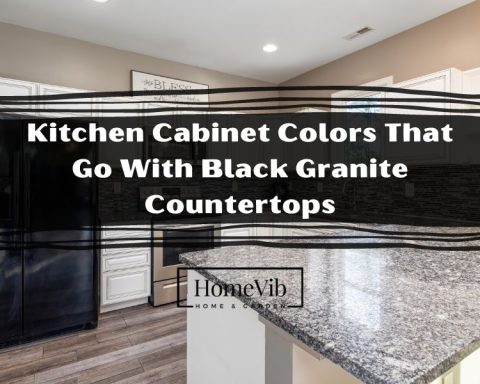A good countertop can last a long time and add value to your home. But with so many options available, you may wonder which is the best.
Besides the quality, you must also consider the price of the countertop. As we know, plywood is an inexpensive material used for constructing a home.
But can you use plywood for the kitchen countertop?
You can use plywood for the kitchen countertop to answer the question. But you must remember some considerations. Although you can use any plywood, it must have the correct thickness to achieve a glamorous look. Sealing is also necessary to prevent the plywood from curling or cracking.
Can I Use Plywood For a Countertop?
With proper sealing, plywood can be a beautiful countertop in your kitchen. This material is more affordable compared to countertops made of natural stones.
If you are tight on your budget, you can create a plywood countertop yourself. A DIY countertop may only cost you about $250, including the materials and the labor.
Besides, it is easy to use and customize. Making a plywood countertop is simple as long as there are no odd angles to cut.
But you must note that a wood countertop quickly wears out, especially near the water. Hence, you must wipe it immediately and properly seal it to prolong its life service.
Are Plywood Countertops Good?

If you want a budget-friendly countertop, plywood is one of the best materials. A sheet of plywood can only cost between $12 to $55.
Note that the plywood’s price may vary depending on its thickness and type. If you prefer thick plywood, expect to spend up to $120 per sheet.
Furthermore, plywood is a good material for a DIY project. You don’t need to use special equipment for the project.
You need a table saw, circular saw, impact driver, and wood screws to finish the countertop. Any plywood can also be used for the project.
However, wooden countertops like plywood are more prone to curling and cracking. You must also apply a varnish or a sealant if the countertop is near the water.
If you use rough plywood, make it smooth using sandpaper before applying a wood effect stain. In addition, choose a finish that can protect the kitchen countertop from water.
Plywood Kitchen Countertop Pros And Cons
Pros of Plywood Kitchen Countertops
- One of the pros of a plywood kitchen countertop is that it is less costly than other countertops. As mentioned, it can only cost between $12 to $55, while thicker plywoods are about $120. But if you want to save money, stack at least three thin plywood to achieve the desired thickness.
- Aside from its low price, a plywood countertop is easy to customize. You can also combine it with epoxy to create a stylish and durable countertop in your kitchen.
- Since it is natural wood, plywood, unlike quartz, granite, and marble, can warm the kitchen.
- It also has antibacterial properties, which slow down the bacteria’s growth.
Cons of Plywood Kitchen Countertops
- Like any other wood countertops, plywood also requires high maintenance. You must oil and seal it regularly to prevent scratch and stain damage.
- If there are rough surfaces and edges, you also need to sand them down. Hence, the maintenance cost of plywood is higher than other materials.
- Plywood is sensitive to hot and cold temperatures. Putting hot pans on the kitchen countertop can burn it, damaging it.
- Exposing the countertop to extreme cold temperatures may also lead to warping.
- Climate change may also affect plywood. Dryness may cause cracking, while high humidity can lead to rotting.
- You must also note that a plywood countertop is vulnerable to water damage. It may easily show discoloration and dark spots near the water.
- A countertop made of plywood may decrease the resale value of your house. Homeowners prefer kitchen countertops with durable materials like quartz, marble, and granite.
What Kind Of Plywood Can I Use for Kitchen Countertops?
The good thing about using plywood is that you can use any kind. But if you want your kitchen countertop to look elegant, choose hardwood plywood.
One of the best choices is maple, which has the smoothest finish and the tightest grain patterns. Because of its subtle patterns, maple can fit any design and style.
Another option that you can consider is oak. Because of its unique grain patterns, it adds depth to the appearance of the countertop.
You can choose the red or the white one. Red oak is commonly used for contemporary-looking countertops. Meanwhile, the white oak is more expensive and typically seen on antiques.
For a cheaper option, you can choose mahogany. It is called the workhorse of plywood countertops. The color of this plywood is light red, which can easily combine with other shades and tones.
Moreover, it has a perfect straight grain that doesn’t need any stains. Mahogany imported from other countries may have a slight difference in aesthetic characterizations.
How Thick Should a Plywood Kitchen Countertop Be?
For those using real plywood, the required thickness is at least 19/32”. However, some homeowners use 23/32” of plywood for their countertops.
But this thickness is not necessary for residential homes. It is usually used for commercial and industrial purposes. For normal application, laminate two pieces of 19/32” plywood.
How To Finish a Plywood Countertop?
Before applying a finish on the countertop, smooth the unfinished wood using sandpaper. Following the wood’s grain and making strokes in one direction is crucial.
Once done, remove the sanding dust by vacuuming the plywood’s surface. Don’t forget to wipe the surface with a damp microfiber cloth and let it get dry.
Next, dilute the polyurethane finish by combining mineral spirits with polyurethane. Using a paint stirrer, stir the solution, then apply it to the plywood with a paint pad.
You must allow the coat to cure at least over the night. Reapply the finish the next day with a natural-bristled paintbrush, then let it dry for 24 hours.
Using sandpaper, make the surface smooth, then remove the dust with a vacuum. Before applying the final coat, wipe the surface with a damp cloth.
Repeat the same brushing method as you did while applying the first coats. Leave the plywood for 24 hours and let it dry.
How To Waterproof Plywood Countertop?
There are different methods you can use to make plywood countertops waterproof. One of these is by applying paint.
Using interior latex paint for indoor projects like kitchen countertops is ideal.
Rust-Oleum Interior Latex Paint
However, you shouldn’t forget to apply a primer and a topcoat to make the plywood more durable.
Water-Based Stain Blocking Primer
A highly recommended top coat is a water-based polyurethane.
Besides keeping the countertop waterproof, epoxy can also retain its wood look. But its thickness makes it more challenging to apply on non-flat surfaces.
Another option is plastic sheeting, contact paper, or wallpaper to prevent condensation. It can also protect it from dust, scratches, and dirt.
Black Decorative Vinyl Film for Kitchen Countertops
Can You Epoxy Over the Plywood Countertop?
You can apply epoxy resin over your plywood kitchen countertop. Applying it can be more challenging than other normal finishes.
You may need assistance if it is your first time using epoxy resin for an indoor project. However, epoxy resin can make a plywood countertop waterproof and durable.
If you want to use epoxy, you must first prepare the surface of the plywood by removing dust and stains. Instead of using a tack cloth, pour acetone into a dry rag.
Next, seal the countertop by applying two coats of water-based polyurethane. 
Varathane Water-Based Polyurethane
Typically, epoxy resin includes two products: a liquid resin and a liquid hardener.
Before you combine the liquid resin and the hardener, check the package instructions. Combine the two products with a stir stick and apply the mixture immediately.
It only takes 10 to 15 minutes before the epoxy resin sets up. Pour the epoxy resin onto the countertop’s surface and apply it using a plastic spreader. It must not be more than ⅛” thick.
Wait at least four to five hours for curing before applying the second coat. After the curing time, you can now apply the second coat. It will take 72 hours before the curing time is completed.
Is Plywood Better Than MDF For The Kitchen?
Medium-density fiberboard (MDF) is preferred by many as a kitchen countertop over plywood. It is because this material has a smooth surface.
Unlike plywood, MDF doesn’t have jagged edges even if it has been cut. Furthermore, the material is less prone to moisture. Hence, it can prevent swelling and warping, making it an ideal kitchen countertop.
In addition, many homeowners consider using MDF over plywood because of its versatility. It can be nailed and screwed without cracking and damaging it.
Engineered woods like MDF are also covered with a laminate or veneer sheet. It is also more eco-friendly since it is made from leftover scraps and waste.













